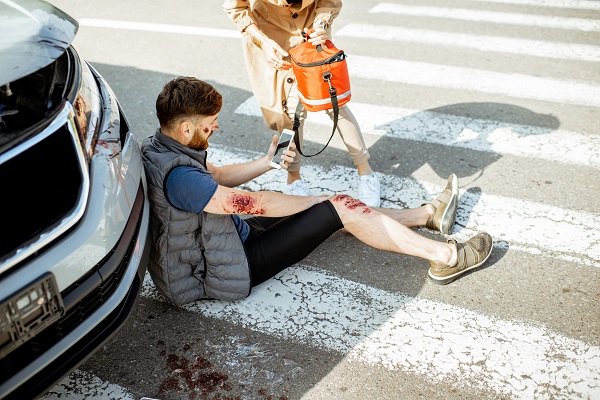Pedestrian Accident Liability in Tennessee Personal Injury Cases
Nashville Personal Injury Lawyers Explain Factors Impacting Liability in Pedestrian Accidents
Establishing liability in Tennessee pedestrian accident cases can get complex. This is particularly true when insurance companies try to place some or all of the blame on the pedestrian injured in the incident. Our Nashville pedestrian accident attorneys emphasize the pivotal role of comparative negligence in personal injury claims. The assignment of fault can dramatically impact the ability of accident victims to secure fair compensation for their injuries and losses.
How Proving Liability Impacts Recovery of Damages
If you’ve been violently struck by a vehicle while on foot, you’ve likely sustained some serious injuries. You have a legal right to seek a fair settlement for your pedestrian accident to cover damages you experienced as a result of the accident, such as medical bills, lost wages, and more.
The fair value of a pedestrian accident can vary considerably based on the severity of your injuries and other factors, including how fault is assigned for the accident. For example, a pedestrian who was jaywalking at the time of the crash may be partly to blame.
Understanding Modified Comparative Fault in Tennessee
The doctrine of modified comparative fault is a key factor affecting pedestrian accident claims. Under Tennessee tort law, a victim who is partly to blame for causing an accident can still seek compensation from other at-fault parties to pay for their losses.
This Tennessee personal injury law can dramatically affect how victims seek damages recovery. With the rule of modified comparative fault, the amount of money recoverable in settlement is reduced proportionately by the amount of blame. This holds true so long as the person who was injured is less than 50% at fault.
As an example of comparative negligence, say that a pedestrian struck by a vehicle seeks to recover $100,000 in total damages. The pedestrian is found to be 20% to blame for causing the accident. In this case, their $100,000 claim is reduced by 20%. So, they may recover up to $80,000 in a settlement.
When a car or other motor vehicle hits a pedestrian in an accident, the pedestrian is rarely determined to be more than 50% to blame for causing the crash. However, insurers will often fight to place at least part of the blame on pedestrians in an attempt to reduce the amount of money they have to pay for the injury claim.
Using Evidence From the Pedestrian Accident Scene
The process of proving who is at fault for causing a pedestrian accident is similar to how liability is determined in a car accident. The courts and insurance companies will look at the totality of the evidence to establish blame. This begins with looking at evidence taken or retrieved from the pedestrian accident scene, including:
- Photos and videos of the accident scene, including relevant traffic signs and markings
- Testimony from eyewitnesses who saw the accident happen
- Police reports from officers reporting to the scene
- Photographic evidence of injuries sustained
- Physical evidence like paint, debris, and tire skid marks on the road
Notably, while pedestrians have rights and privileges that motorists do not have, Tennessee pedestrian laws also outline certain responsibilities. For example, pedestrians are expected to obey traffic signals, use marked crosswalks, and yield to oncoming traffic outside of crosswalks. They do not always have the right of way. Breaking any of these rules while on foot could place part of the blame on the pedestrian for causing an accident.
Providing Proof of the Driver’s Negligent Actions
Proving liability becomes especially crucial in pedestrian accident cases where fault is debatable. To hold a driver liable for damages in a pedestrian accident, you must prove they acted in a negligent manner and that their negligent actions caused the accident.
The law expects drivers to exercise caution around pedestrians. This extends beyond regular streets and highways to also include parking lots and other areas where cars and people mix. Examples of negligent behavior by drivers that may cause pedestrian accidents include:
- Speeding
- Running a red light or stop sign
- Driving under the influence
- Distracted driving
- Failing to yield
- Breaking other traffic laws
A skilled attorney can work with accident reconstruction, forensic, and traffic investigation experts to help prove how a driver’s actions contributed to an injury-causing collision.
Protect Your Rights With a Nashville Personal Injury Attorney
If you’ve been hit by a car while walking in Nashville, it’s vital to hire an experienced pedestrian accident lawyer as soon as possible in order to protect your best interests. The skilled personal injury attorneys at GriffithLaw have experience representing victims of pedestrian accidents. We have a track record of getting results for our clients, and we’ll fight for your rights to help make sure you receive fair compensation for the damages you have suffered.


